Football is without a doubt the biggest phenomenon in the UK. Just look at the outcry in the face of the recent proposal for European super leagues. If baseball is America's pastime, then football is Britain's all-the-time. Football in the UK is something to be proud of, with many declaring the Premier League to be the best league in the world, and it is a strong point to do so.
Where this pride has often faded, however, is facing women's football. Not only does Britain have a rich men's football history, but it also has a rich woman's football history. And while many through the ages have done their best to obliterate and disregard this fact, we are now finally beginning to see a rebirth of the female game.
History
As long as men have played football, so have women. These roots can definitely be traced back at least as far as the end of 18 th century, when football was an informal affair.
on 19 th century saw the introduction of the association football. The rules were completed and standardized and the sport gained momentum. Just as men set up teams, so did women. As women became more interested in football, opposition to doing so grew. For them, it was considered a hobby; Playing for fun was fine, but regulating it as a formal sport was not in the eyes of the association.
First clubs
In the face of this objection, two teams managed to establish themselves, but they faced heavy pressure. Much was directed at their appearance and their intrusion into a man's play. This ugly model has long informed the dialogue around women and football.
The first club to emerge was Mrs. Grahams XI, established in Scotland in 1881, by Helen Graham Matthews. At 9 th in May of that year, they played their first game, but during only their second game, they encountered violent protests and tone invasions and were forced to leave the project.
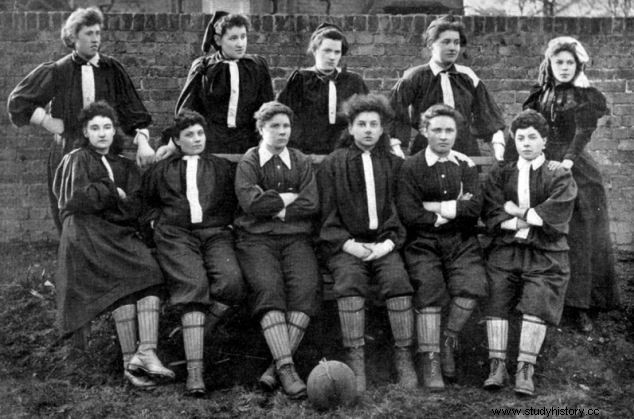
The other club came three years later in the form of the British Ladies Football Club, created by Alfred Hewitt Smith, with Scottish writer and feminist Lady Florence Dixie as the patron saint and Nettie Honeyball as captain and face of the team. Helen Matthews also joined as a player. Honeyball was defiant in his conversations about players and challenges for those around the men's game.
Problems
People were not convinced about the team even before their first match. There were generally two schools of thought when it came to women playing football; those who thought the idea was funny and those who felt more threatened by it.
Their arguments consisted mainly of much of the usual anti-feminist rhetoric surrounding all sports at the time. They claimed that it was bad for women's health, that they wanted to dress ridiculously or modestly, that they could make money from football, and finally again, that football was just a game for men and men.
Despite the criticism, Honeyball was again defiant and announced that a match would be put on for the public in 1895. British Ladies Football Club was divided into two teams, North vs South, in a game that North won 7:1, and was watched of a quantity of 10,000, with several facing away at the gate.
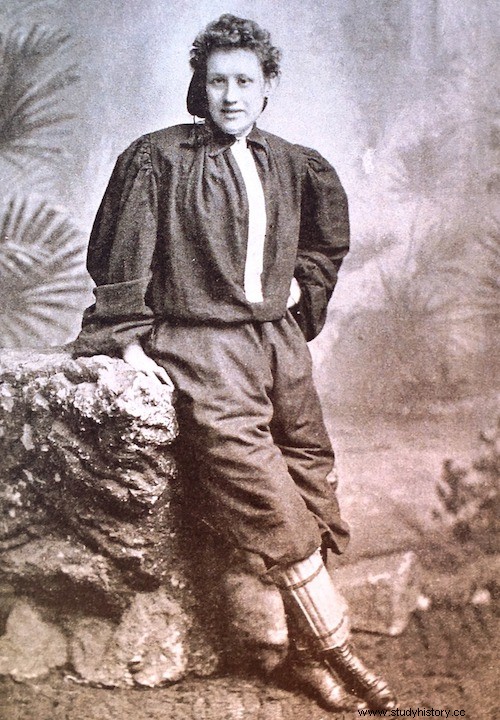
In the face of what appeared to be a success, the press was negative, the women had "looked silly" and many of the crowd "took a break due to boredom." While there was an undeniable bias in the press, interest in women's football weakened in the face of men.
First resurgence
Only about 20 years later did women's football make its first big comeback. As World War I raged, female factory workers began to play during their breaks, and as more people joined, they began to form teams and arrange inventory.
In 1915, the FA stopped men's football due to the fact that many players went to fight, and in the absence of association football, the popularity of the women's matches increased. The FA offered support and the women started playing in stadiums, assisted by male coaches and players.
With this new play, crowds regularly showed up in the tens of thousands to watch women play. The matches were reported in Football Special Magazine weekly, and a new light shone on women's football.
Continued popularity
This popularity continued throughout the end of the war. A 1920 Boxing Day match between Dick, Kerr ladies and St. Helen's ladies , England's two best women's teams, at Goodison Park drew in crowds of 53,000 10,000 and then another XNUMX XNUMX turned away at the gates.
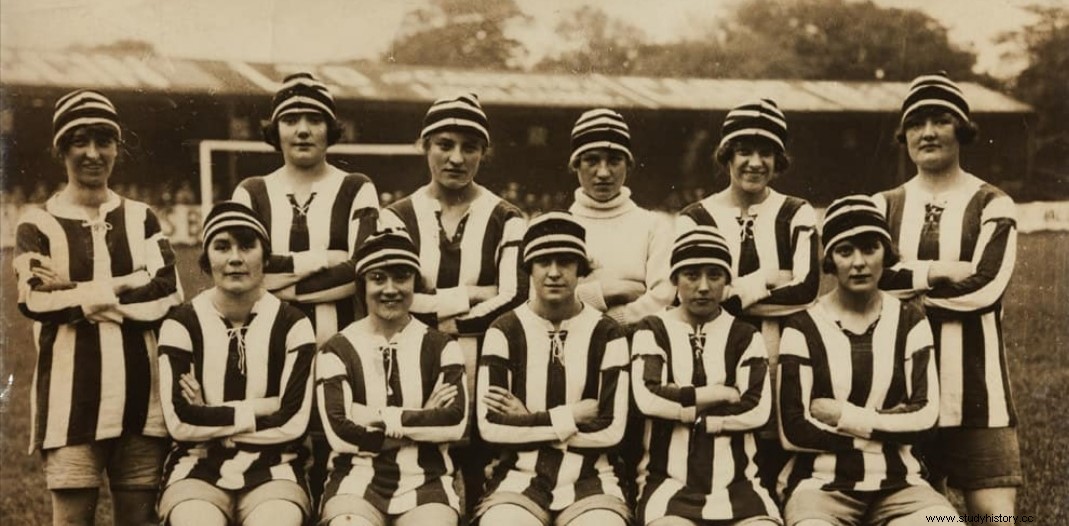
In 1921, each city had a women's team, and most cities had several. A movement began to establish a women's football association. However, the FA saw the success of the women as a threat, they brought in more crowds and headline stories than ever before, even in the men's games.
Women's football was a major fundraiser during the war, some clubs raised millions, and some were concerned that since the money ran out, these funds could now be used to pay players, thus entering a time of professionalism in women's sports. This was considered unacceptable.
Prohibition of women's football
In December 1921, the FA banned women from playing football and using league facilities. The media framed this as a step to protect women, football was "too taxing for women's bodies."
Without facilities, the sport became untenable and its credibility was destroyed. Women's football in the UK was in a state of limbo for the next 50 years, with this ban first officially lifted in 1971. The women's football league in England became professional in 2018 and now, 100 years after football was banned for women in the UK. , we see some similarity in the height women's football can reach again.
Modern revival
From the beginning of the 70's, the women's game began to grow again. We saw the first women's FA Cups and international matches for the home countries. WFA was established and joined the FA in 1983, and 10 years later the women's football committee was established to run the sport. In 1991 the WFA launched a 24-team league and in 1997 a grassroots plan was started to develop the sport.
In 2002, football was the leading sport in the participation of women and girls. The United Kingdom hosted the UEFA Women's Championship in 2005, and just over 29,000 spectators attended the opening match. They were accompanied by another 2.9 million to watch from home on BBC2. In total, the tournament increased over 115,000 15 over its XNUMX matches, which until this tournament was unique in women's football in the UK.
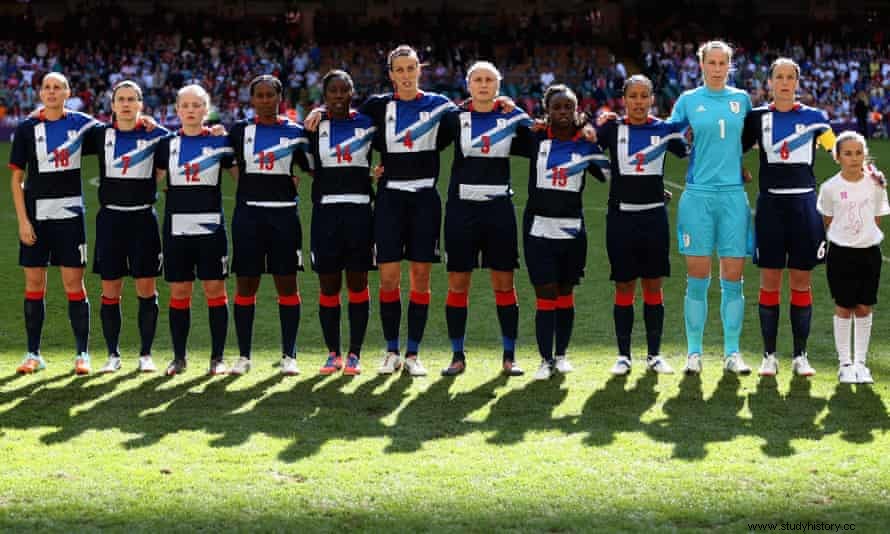
The popularity increased further with the success of the GB team at the Olympics in London 2012, and before the 2018-19 season, the league structure in England changed, and was renamed the FA Women's Super League. This was the first introduction of a completely professional football league for women.
Greater exposure
This year, the Women's Super League (WSL) signed a £ 8 million-per-season deal for broadcasting rights, which will see games shown on BBC1, BBC2 and Sky Sports. With this increased availability, research has found that this can mean an increase in viewership of up to 350% globally and by up to 296% in the UK.
These studies, conducted by RunRepeat and reported in vergen , also found that in the UK 61.9% of women's football audiences were men, and that 34.4% of men and 27.1% of women would watch women's football if access was easier.
This step of increasing the audience takes the duty of fans who have previously had to find alternative platforms or services such as BBC Red Button. Taking away the extra steps is seen to encourage informal sports fans to engage more regularly and more fully with WSL, and women's football in general, especially given the lack of top football in any form on the ground.
Attendance increases
The 2019 World Cup was a great success for women's football, both globally and in the UK. The tournament drew a total global audience of 1.12 billion, and the final alone captured 263.63 million viewers. In the UK, 11.7 million people, or 47% of the total population, sat down to watch England's semi-final against the United States, and no England game had less than 4 and a half million to watch (England's 2-0 win over Japan had lowest viewership of 4.7 million).
The effect of this was a 34% increase in attendance in the Super League for women from the 2018 to 2019 season to the 2019 to 2020 season. With pressure to get women's football back to the largest area and take advantage of the new audience that women's football had gained, individual records at game attendance were broken.
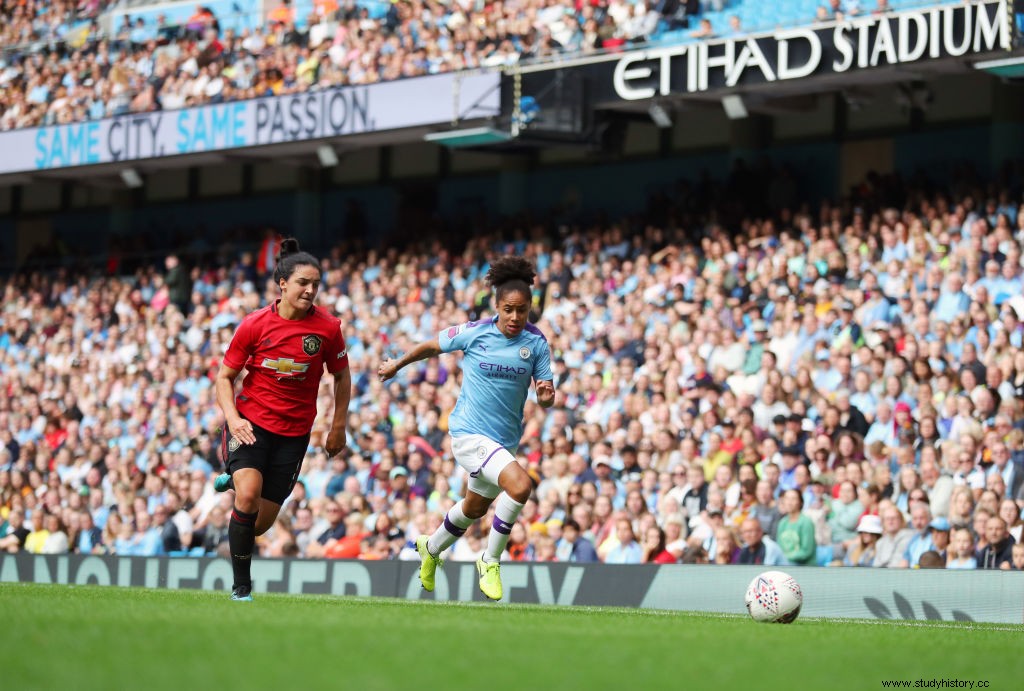
The first Merseyside women's derby held at Anfield drew 23,500 24,564 spectators, Chelsea's first game of the season watched by 31,213 2 fans and 0 XNUMX filled the Etihad Stadium to watch Manchester City host rivals Manchester United. The highest attendance of the season was set in Arsenal's XNUMX-XNUMX victory over Tottenham Hotspur.
This was the culmination of ever-increasing crowds for WSL matches until the outbreak of the Covid-19 pandemic that limited much of the growth, not only in women's football, but much of the competitive sport around the world.
The attendance record for a British-based international side was set in 2019 when 77,768 2 fans showed up at Wembley to watch England's tough 1-2012 defeat from Germany's hands. However, this was not the first time England had put on a huge turnout for a women's football match; The final in London 80,023 games showed that XNUMX showed up for the match between the USA and Japan. This still holds the record for the largest attendance at a women's football match in England.
Rise of Pundits
This growth is not limited to just the track, and we are now seeing more and more women entering the worlds of both punditry and commentary. Karen Carney, Alex Scott, Eniola Aluko and Rachel Brown-Finnis, to name a few, have all appeared in major broadcasts to cover both men's and women's football.
Earlier this year, BT Sport broke new ground with a female broadcasting team led by host Lynsey Hipgrave joined by Eni Aluko and Faye White to cover both the Premier League and Women's Super League action. This was supported by co-commentary from Lucy Ward along with Darren Fletcher. BT Sport was clear in saying that this was not just a "one-off", but rather an indication that the channels included more intentions going forward.
To look at this as a cultural event, it is a declaration of intent that encourages a change in the social perspective. More women who are visible in and around football, promote growth and begin to break down preconceived gender roles. Instead of tipping the balance in favor of women, broadcasters are balancing the scales, leveling the screen time equally between genders, so that when any of them are seen on your screens, it's no longer a surprise.
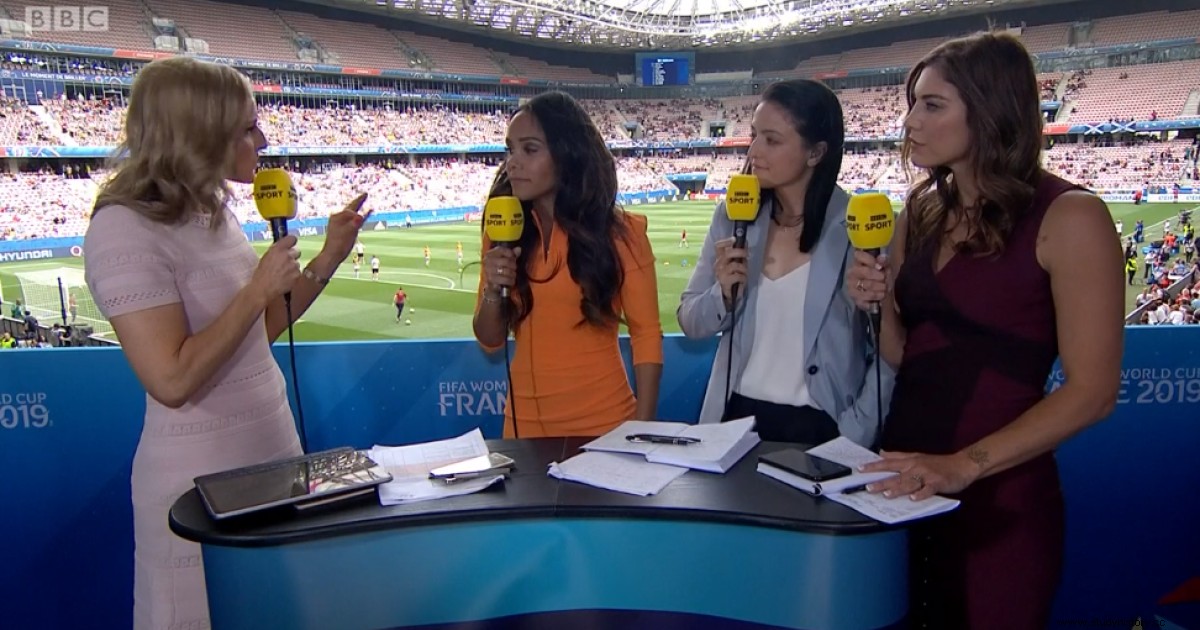
The role of an expert is to share views and provide insight into the sport they are involved in, and this is where the audience is focused, as opposed to who says it.
In recent days, it has also been announced that Alex Scott will take over from Dan Walker as the new host of Football Focus on the BBC. Since the announcement, she has commented on how much support she has had on social media, and shows a further change in the landscape for women and football media.
Anthropology:The social relevance of football
Football in the UK has long been a great subject for anthropological study, as it is in many ways a microcosm of the broader culture of the UK. It highlights issues of identity, race and gender and can be used to examine people's feelings and meaning.
With this in mind, the revival of the focus on women's football provides an example of the direction in which Britain can go, provided the right support is provided. If football can begin to demonstrate a change of attitude and begin to cast the mark "the game of man" it was adopted years ago, there is perhaps a chance that these attitudes will be filtered further into a broader, more inclusive society.
Of course, this is a long way full of many deeply engraved holes, but given the history and endurance of women who are passionate about the sport they love, we may soon come to a more universally beautiful game.
